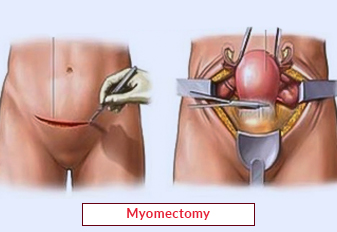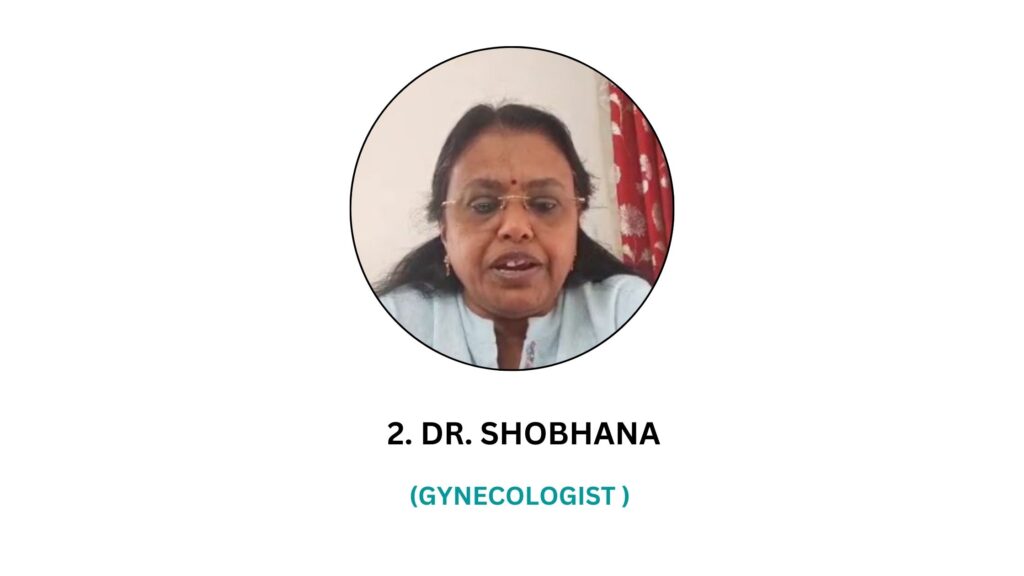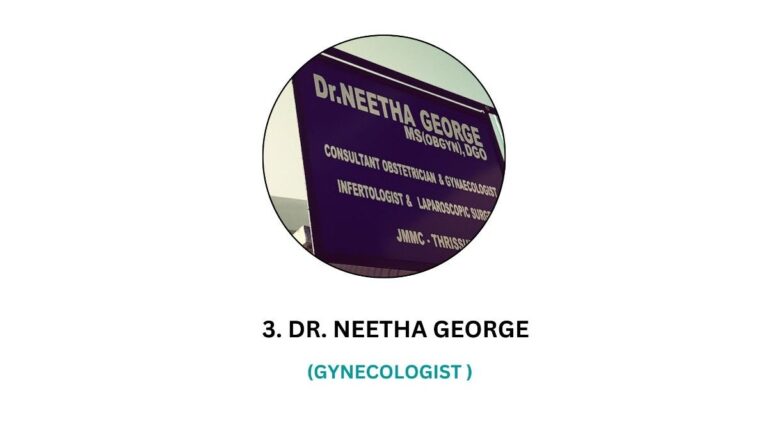Fibroids, adenomyosis, and other uterine anomalies have long challenged women’s reproductive health, often causing discomfort, heavy menstrual bleeding, and fertility issues. Over the years, surgical treatments have evolved from highly invasive procedures to refined, minimally invasive techniques that allow for faster recovery and improved outcomes. One such breakthrough is the hysteroscopic myomectomy thrissur procedure.
Dr. Praveen R, with his extensive experience in gynecological laparoscopy and infertility management, has become a trusted name in performing advanced procedures such as hysteroscopic myomectomy thrissur. His commitment to excellence, combined with a deep understanding of patient needs, has revolutionized how fibroids and other intrauterine pathologies are treated.
Understanding Hysteroscopic Myomectomy
Hysteroscopic myomectomy is a minimally invasive procedure specifically designed to remove fibroids and other abnormal tissue from the uterus.

Unlike traditional surgery, which often involves large incisions, this procedure uses a hysteroscope—a thin, lighted tube inserted through the vagina—to access the uterus. The surgical instruments are passed through the hysteroscope, allowing for precise excision of fibroids while preserving the uterus.
The hysteroscopic myomectomy thrissur technique, as performed by Dr. Praveen, leverages the latest advancements in endoscopic surgery. This approach minimizes trauma to surrounding tissues, reduces the risk of infection, and significantly cuts down recovery time. By focusing on targeted treatment, the procedure ensures that only the fibroid is removed, thereby maintaining the integrity of the uterine cavity.
Key points about this procedure include:
Precision: The use of a hysteroscope allows for detailed visualization of the uterine interior, ensuring complete and accurate removal of fibroids.
Minimally invasive: With no large incisions required, patients experience less pain, lower risk of complications, and a faster return to daily activities.
Enhanced outcomes: Preservation of the uterus and minimal disturbance to the reproductive environment makes this procedure particularly appealing for women who wish to maintain fertility.
The innovation behind hysteroscopic myomectomy thrissur lies in its ability to combine cutting-edge technology with a compassionate approach to patient care. Dr. Praveen’s expertise ensures that each procedure is tailored to the individual’s unique anatomical and medical needs, paving the way for better long-term outcomes.
Hysteroscopic Myomectomy vs. Traditional Myomectomy
When deciding on a surgical approach for fibroid removal, patients are often presented with two primary options: traditional myomectomy and hysteroscopic myomectomy. Understanding the differences between these procedures is crucial to making an informed decision.
Traditional Myomectomy
Traditional myomectomy is typically performed through open surgery (laparotomy) or laparoscopy, requiring incisions in the abdominal wall. This approach can be effective, particularly for larger or multiple fibroids, but it also carries certain drawbacks:
Longer Recovery: Open surgeries involve larger incisions, which result in a longer healing period and more postoperative discomfort.
Higher Risk of Complications: The invasiveness of the procedure increases the risk of infection, bleeding, and other complications.
Impact on Fertility: Traditional surgeries may lead to scar tissue formation, which can affect the uterine lining and future fertility.
Hysteroscopic Myomectomy
In contrast, hysteroscopic myomectomy, such as the hysteroscopic myomectomy thrissur performed by Dr. Praveen, offers several significant advantages:
Minimally Invasive: With no abdominal incisions, the procedure minimizes tissue damage and speeds up recovery.
Reduced Pain and Scarring: The absence of large incisions means less postoperative pain and minimal scarring.
Better Preservation of Fertility: By only removing the fibroid tissue, the integrity of the uterine cavity is maintained, preserving the patient’s ability to conceive in the future.
Shorter Hospital Stay: Patients often go home the same day or after a short hospital stay, making this procedure an attractive option for busy individuals.
Ultimately, the choice between traditional and hysteroscopic approaches depends on factors such as the size, number, and location of fibroids, as well as the patient’s overall health and reproductive goals. With a focus on precision and patient safety, hysteroscopic myomectomy thrissur is an increasingly popular choice among women seeking a less invasive yet highly effective treatment option.

What to Expect Before, During, and After Hysteroscopic Myomectomy
A successful hysteroscopic myomectomy requires careful planning and clear communication between the patient and the surgeon. Here’s an in-depth look at what patients can expect before, during, and after the hysteroscopic myomectomy thrissur procedure.
Before the Procedure
1. Comprehensive Evaluation:
Before undergoing the hysteroscopic myomectomy thrissur, patients will have a detailed consultation with Dr. Praveen. This includes:
Medical History: A thorough review of the patient’s medical background, including any previous surgeries, existing conditions, and current medications.
Diagnostic Tests: Imaging studies such as ultrasound, MRI, or hysteroscopy itself may be conducted to precisely map the fibroid’s location and size.
Discussion of Expectations: Dr. Praveen will explain the procedure in detail, discussing potential benefits, risks, and expected outcomes. This helps patients set realistic expectations and feel confident about the process.
2. Preoperative Instructions:
Patients will receive specific instructions on how to prepare for the hysteroscopic myomectomy thrissur. These may include:
Fasting Guidelines: Instructions on when to stop eating or drinking prior to surgery.
Medication Adjustments: Guidance on which medications to continue or stop in the days leading up to the procedure.
Personal Preparations: Suggestions for arranging transportation and support for the day of the surgery.
During the Procedure
1. Anesthesia:
The hysteroscopic myomectomy thrissur is usually performed under general anesthesia or regional anesthesia, ensuring that the patient remains comfortable and pain-free throughout the surgery.
2. Insertion of the Hysteroscope:
Dr. Praveen carefully inserts the hysteroscope through the vagina and cervix, allowing for a direct view of the uterine cavity. The precision offered by the hysteroscope is one of the key advantages of this procedure.
3. Fibroid Removal:
Using specialized instruments, the fibroid is meticulously resected. Dr. Praveen’s expertise ensures that only the abnormal tissue is removed, preserving the surrounding healthy tissue. The entire process is carefully monitored to minimize any potential complications.
4. Use of Fluid for Visualization:
During the hysteroscopic myomectomy thrissur, a saline solution is often used to distend the uterine cavity, enhancing visualization and ensuring that the fibroid is completely excised.
After the Procedure
1. Immediate Recovery:
After the procedure, patients are transferred to the recovery area where they are monitored as the anesthesia wears off. Most individuals experience only mild discomfort and can often return home the same day.
2. Postoperative Care:
Patients are provided with detailed postoperative instructions to ensure a smooth recovery. These include:
Activity Restrictions: Guidelines on when to resume normal activities and exercise.
Medication: Prescriptions for pain management and to prevent infection.
Follow-Up Visits: Scheduled appointments to assess healing and discuss any concerns.
3. Long-Term Follow-Up:
Long-term outcomes after the hysteroscopic myomectomy thrissur are generally very positive. Dr. Praveen emphasizes the importance of regular check-ups to monitor uterine health and ensure that any recurrence of fibroids is addressed promptly.
By outlining the entire process—from preoperative evaluations to long-term care—Dr. Praveen ensures that each patient undergoing a hysteroscopic myomectomy thrissur is well-informed and prepared for every step of the journey.

Benefits and Advantages of Hysteroscopic Myomectomy
Hysteroscopic myomectomy thrissur has emerged as a preferred option for many patients due to its numerous benefits over traditional surgical methods. Here are some of the primary advantages of this procedure:
1. Minimally Invasive
Because the hysteroscopic myomectomy thrissur is performed without external incisions, patients benefit from reduced postoperative pain, less blood loss, and minimal scarring. This minimally invasive approach makes it easier for women to resume their daily activities quickly after surgery.
2. Preservation of the Uterus
For women wishing to maintain their fertility or simply preserve the structural integrity of their uterus, the hysteroscopic myomectomy thrissur offers a compelling advantage. The technique targets only the fibroid tissue, leaving the healthy uterine tissue intact.
3. Faster Recovery Time
Patients who undergo the hysteroscopic myomectomy thrissur typically experience a much shorter recovery period compared to those undergoing traditional myomectomy. With reduced hospital stays and quicker return to work and normal activities, this procedure is ideal for those with busy lifestyles.
4. Reduced Risk of Infection and Complications
The absence of large incisions in the hysteroscopic myomectomy thrissur procedure significantly lowers the risk of infection and other complications that are often associated with open surgery. With meticulous care and advanced techniques, Dr. Praveen ensures a safer surgical experience.
5. Improved Patient Satisfaction
With less pain, faster recovery, and effective treatment outcomes, patient satisfaction with the hysteroscopic myomectomy thrissur is remarkably high. Many women appreciate the ability to return to their normal routines while still addressing their medical concerns effectively.
These benefits not only highlight the technical advancements of modern gynecological surgery but also underscore the importance of personalized care. Dr. Praveen’s expertise in performing hysteroscopic myomectomy thrissur ensures that every patient receives a treatment plan tailored to her specific needs and lifestyle.
Meet Dr. Praveen
Dr. Praveen R is renowned for his excellence in the fields of gynecology, laparoscopic surgery, and infertility management. His extensive training and years of experience have positioned him as a leading expert in minimally invasive surgical techniques. Here’s what makes Dr. Praveen stand out:

Background and Expertise
Academic Excellence: Dr. Praveen has received rigorous training in gynecological surgery and laparoscopy, ensuring that his practice is grounded in the latest medical research and surgical techniques.
Comprehensive Skill Set: With expertise ranging from laparoscopic hysterectomy and myomectomy to ovarian cystectomy and endometriosis surgeries, he offers a wide spectrum of treatments tailored to women’s health.
Innovative Approach: Specializing in procedures such as hysteroscopic myomectomy thrissur, Dr. Praveen continually adopts the latest innovations to enhance surgical precision and patient outcomes.
Hospital Affiliations
Dr. Praveen practices at some of the most respected healthcare institutions, including:
Aswini Hospital
West Fort Hospital
Bhavana Health Care
These affiliations not only highlight his credibility but also ensure that patients have access to state-of-the-art facilities and comprehensive care.
Personal Philosophy
Dr. Praveen is known for his compassionate approach, spending time with each patient to understand their unique challenges and tailoring his surgical techniques accordingly. His emphasis on minimally invasive procedures, such as hysteroscopic myomectomy thrissur, reflects his commitment to reducing patient discomfort and optimizing recovery.
Why Choose Dr. Praveen
When it comes to selecting a surgeon for complex gynecological procedures, expertise, experience, and a patient-centered approach are paramount. Here’s why choosing Dr. Praveen for your hysteroscopic myomectomy thrissur procedure is the best decision:
1. Unparalleled Expertise
Dr. Praveen’s extensive training in advanced gynecological procedures ensures that he is well-equipped to handle even the most challenging cases. His deep understanding of uterine pathology and precise surgical techniques guarantees optimal results for every hysteroscopic myomectomy thrissur.
2. State-of-the-Art Facilities
Practicing at premier hospitals like Aswini Hospital, West Fort Hospital, and Bhavana Health Care, Dr. Praveen ensures that his patients benefit from modern surgical environments and the latest technological advancements. This translates to enhanced safety and effectiveness during the hysteroscopic myomectomy thrissur.
3. Personalized Patient Care
Every patient is unique, and Dr. Praveen takes the time to listen, evaluate, and design a treatment plan that best suits each individual’s health goals. His empathetic approach ensures that patients are well-informed and comfortable throughout the process—from consultation to recovery after hysteroscopic myomectomy thrissur.
4. Proven Track Record
With a long list of successful surgeries and positive patient testimonials, Dr. Praveen has built a reputation for excellence. His commitment to safety, innovation, and patient satisfaction makes him the ideal choice for anyone considering hysteroscopic myomectomy thrissur.
5. Commitment to Innovation
Dr. Praveen is continually updating his methods and incorporating new surgical techniques to offer the best possible outcomes. His proficiency in hysteroscopic myomectomy thrissur stands as a testament to his dedication to modern, minimally invasive surgical practices.
For patients seeking a blend of technical skill and compassionate care, Dr. Praveen remains a leading choice in gynecological surgery, particularly for advanced procedures like hysteroscopic myomectomy thrissur.
TOP 5 Best Gynecologist In Thrissur

I am Dr. praveen r, a dedicated gynecologist specializing in women’s health, fertility treatments, and laparoscopic procedures. My goal is to provide compassionate care and advanced medical solutions for every stage of a woman’s life.

I am Dr. shobhana, a gynecologist specializing in fertility treatments and minimally invasive laparoscopic procedures. My expertise includes helping couples achieve their dream of parenthood and providing advanced surgical solutions for conditions like fibroids, endometriosis, and ovarian cysts.

With years of experience as a gynecologist, I have helped countless women navigate their health concerns with confidence. From preventive screenings to complex gynecological surgeries, I ensure that every patient receives the best possible care tailored to their needs.

I am Dr. sajeer, a gynecologist specializing in fertility treatments and minimally invasive laparoscopic procedures. My expertise includes helping couples achieve their dream of parenthood and providing advanced surgical solutions for conditions like fibroids, endometriosis, and ovarian cysts.

Hello, I’m Dr. vineetha, a gynecologist committed to supporting women’s health with expert diagnosis and treatment. Whether you need routine check-ups, fertility advice, or advanced surgical care, I am here to guide you with personalized and compassionate treatment.
Ideal Candidate for Hysteroscopic Myomectomy
Understanding who can benefit from a hysteroscopic myomectomy thrissur is critical in ensuring successful treatment outcomes. The ideal candidate typically exhibits the following characteristics:
1. Symptomatic Fibroids
Patients who experience heavy menstrual bleeding, pelvic pain, or other symptoms related to uterine fibroids are prime candidates for this procedure. The minimally invasive nature of hysteroscopic myomectomy thrissur makes it particularly appealing for those seeking relief without undergoing major surgery.
2. Desire for Fertility Preservation
For women who wish to maintain or enhance their fertility, hysteroscopic myomectomy thrissur offers the advantage of preserving the uterus and minimizing damage to the reproductive system. Dr. Praveen ensures that the procedure is performed in a way that maintains the natural architecture of the uterus.
3. Suitable Fibroid Characteristics
Not all fibroids are candidates for a hysteroscopic approach. Generally, submucosal fibroids—those that grow into the uterine cavity—are best suited for hysteroscopic myomectomy thrissur. A detailed diagnostic workup will determine whether a patient is an ideal candidate.
4. Commitment to Postoperative Care
Successful outcomes are closely linked to adherence to postoperative care instructions. Patients undergoing hysteroscopic myomectomy thrissur should be motivated to follow their surgeon’s recommendations regarding activity levels, medication, and follow-up visits to ensure a smooth recovery.
By thoroughly evaluating each patient’s medical history and symptoms, Dr. Praveen customizes the hysteroscopic myomectomy thrissur procedure to maximize benefits and minimize risks.
Questions to Ask
When considering a hysteroscopic myomectomy thrissur, being well-informed is key to making the best decision for your health. Here are some important questions to ask during your consultation with Dr. Praveen:
-
What is the overall success rate of the procedure?
Understand the likelihood of symptom relief and preservation of fertility following the hysteroscopic myomectomy thrissur. -
How do you determine if I am an ideal candidate?
Ask about the diagnostic tests and criteria used to assess suitability for the procedure. -
What are the potential risks and complications?
A detailed explanation of the possible adverse effects and how they are managed can help set realistic expectations. -
How do you manage pain and recovery post-surgery?
Inquire about pain management strategies and the typical recovery timeline following the hysteroscopic myomectomy thrissur. -
What should I expect during the procedure?
Get a clear picture of what will happen before, during, and after the surgery. -
How will this procedure affect my future fertility?
Understand the impact of hysteroscopic myomectomy thrissur on your reproductive plans. -
What postoperative follow-up is required?
Ask about the frequency and nature of follow-up appointments to ensure proper healing.
These questions not only help build trust but also ensure that you have a comprehensive understanding of the hysteroscopic myomectomy thrissur procedure and its outcomes.
Managing Risks and Complications in Hysteroscopic Myomectomy
As with any surgical procedure, it is essential to be aware of and manage potential risks and complications. Dr. Praveen employs several strategies to ensure the highest level of safety during the hysteroscopic myomectomy thrissur.
Preoperative Assessment
A thorough evaluation before the procedure helps identify potential risk factors. This assessment includes:
-
Detailed medical history
-
Comprehensive imaging studies
-
Preoperative laboratory tests
By carefully selecting candidates and preparing them for surgery, Dr. Praveen minimizes the risks associated with the hysteroscopic myomectomy thrissur.
Intraoperative Safety Measures
During the procedure, multiple safety measures are in place:
-
Real-Time Imaging: The use of high-definition cameras and real-time imaging ensures precise removal of fibroids.
-
Controlled Environment: The surgical team is highly trained in managing any unexpected situations, ensuring that the hysteroscopic myomectomy thrissur proceeds smoothly.
-
Fluid Management: The use of saline solution for uterine distension is closely monitored to prevent complications such as fluid overload.
Postoperative Monitoring
After the hysteroscopic myomectomy thrissur, patients are closely monitored for any signs of complications. Follow-up visits and imaging studies help ensure that the uterus is healing properly and that any issues are addressed immediately.
Managing Specific Complications
While complications are rare, potential issues such as bleeding, infection, or uterine perforation are promptly managed by Dr. Praveen and his team. Their proactive approach in dealing with complications ensures that the overall success rate of hysteroscopic myomectomy thrissur remains very high.
Postoperative Care and Long-Term Outcomes
Effective postoperative care is critical in ensuring the long-term success of a hysteroscopic myomectomy thrissur. Dr. Praveen provides a comprehensive care plan designed to promote healing, prevent complications, and enhance overall quality of life.
Immediate Postoperative Care
After the procedure, patients are typically observed for a few hours to ensure stability. Key components of immediate care include:
-
Pain Management: Prescription medications and other non-pharmacological methods are used to keep discomfort at a minimum.
-
Activity Guidelines: Patients receive clear instructions regarding rest and gradual resumption of activities to avoid stressing the healing uterus.
-
Hydration and Nutrition: A balanced diet and adequate hydration are emphasized to support recovery.
Long-Term Follow-Up
Long-term follow-up is an integral part of the postoperative plan:
-
Regular Check-Ups: Scheduled visits allow Dr. Praveen to monitor uterine healing and detect any early signs of fibroid recurrence.
-
Lifestyle and Wellness Guidance: Patients receive personalized advice on diet, exercise, and stress management to promote overall reproductive health.
-
Fertility Considerations: For women desiring future pregnancies, special attention is given to ensuring that the uterine environment remains conducive to conception. The hysteroscopic myomectomy thrissur procedure is designed to preserve fertility while resolving the issues caused by fibroids.
Long-Term Outcomes
The long-term outcomes for patients undergoing hysteroscopic myomectomy thrissur are overwhelmingly positive. Benefits include:
-
Sustained Relief from Symptoms: Most patients experience significant improvement in symptoms such as heavy bleeding and pelvic pain.
-
Improved Fertility Prospects: With the uterus preserved, many women successfully conceive after the procedure.
-
Enhanced Quality of Life: Faster recovery times and lower risk of complications contribute to a better overall quality of life.
By focusing on meticulous postoperative care, Dr. Praveen ensures that patients not only recover quickly but also enjoy lasting benefits from their hysteroscopic myomectomy thrissur.
Contact a Leading Women’s Health Specialist in Thrissur
For expert gynecological and fertility care, schedule a consultation with Dr. Praveen R today. His dedication to excellence, combined with a compassionate approach, ensures the best medical care for every woman.
Phone: +91 80893 33651
Locations: Aswini Hospital, West Fort Hospital, Bhavana Health Care
When it comes to comprehensive and advanced care, trust only the best Women’s Health Specialist in Thrissur to guide you through your health journey.
FAQ
1. What is a hysteroscopic myomectomy?
A hysteroscopic myomectomy is a minimally invasive surgical procedure used to remove submucosal fibroids from the uterine cavity. The surgeon inserts a hysteroscope—a thin, lighted tube—through the vagina and cervix into the uterus to visualize and remove the fibroids without external incisions.
2. Who is an ideal candidate for a hysteroscopic myomectomy?
Ideal candidates are women experiencing symptoms such as heavy menstrual bleeding, pelvic pain, or infertility due to submucosal fibroids that are located within the uterine cavity. A thorough evaluation by a gynecologist is necessary to determine suitability for the procedure.
3. How does a hysteroscopic myomectomy differ from other types of myomectomy?
Unlike abdominal or laparoscopic myomectomy, which involve incisions in the abdomen, hysteroscopic myomectomy is performed entirely through the vaginal canal without external cuts. This approach is less invasive and typically involves a shorter recovery time.
4. What is the recovery time after a hysteroscopic myomectomy?
Recovery is generally quick, with many patients resuming normal activities within a few days. However, individual recovery times may vary based on personal health factors and the complexity of the procedure.
5. Are there any risks associated with hysteroscopic myomectomy?
As with any surgical procedure, there are potential risks, including uterine perforation, bleeding, infection, or fluid overload. However, complications are relatively rare, and the procedure is considered safe when performed by an experienced surgeon.
6. Can fibroids recur after a hysteroscopic myomectomy?
Yes, there is a possibility that new fibroids can develop after the procedure. Regular follow-up appointments are important to monitor for recurrence and manage any new symptoms.
7. Will a hysteroscopic myomectomy affect my fertility?
For many women, removing submucosal fibroids can improve fertility outcomes. However, individual results may vary, and it’s essential to discuss fertility goals with your healthcare provider before undergoing the procedure.
8. Is hospitalization required for a hysteroscopic myomectomy?
The procedure is typically performed on an outpatient basis, meaning patients can usually go home the same day. In some cases, an overnight stay may be recommended based on individual circumstances.
9. How should I prepare for a hysteroscopic myomectomy?
Preparation may include undergoing imaging studies like ultrasound or MRI to assess the size and location of the fibroids. Your doctor may also advise you to avoid certain medications and to arrange for someone to accompany you on the day of the procedure.
10. What follow-up care is necessary after a hysteroscopic myomectomy?
Follow-up care typically involves a post-operative visit to assess healing and discuss any concerns. Your doctor may recommend pelvic rest for a short period and will provide guidance on when to resume normal activities, including exercise and sexual intercourse.

